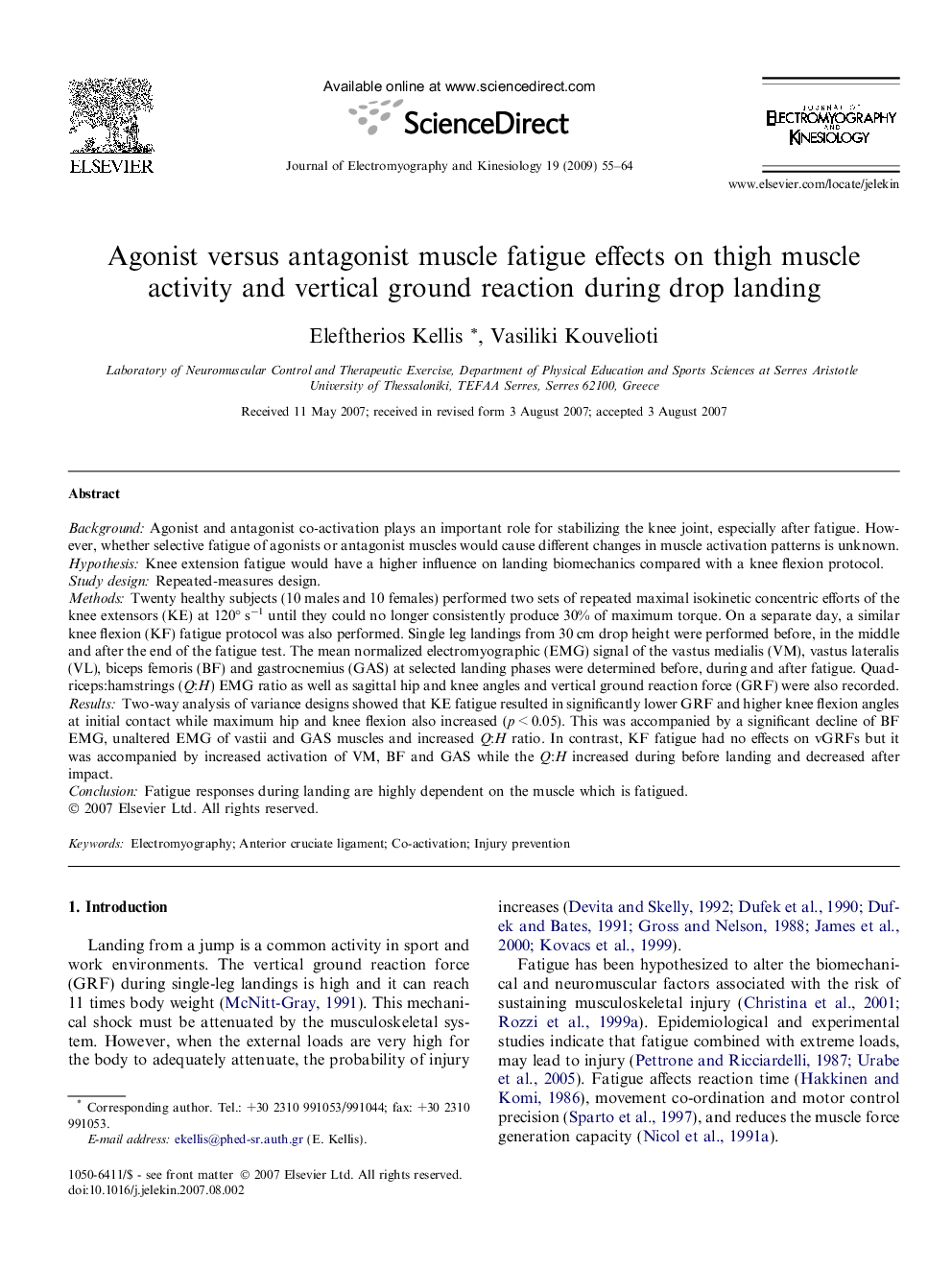| کد مقاله | کد نشریه | سال انتشار | مقاله انگلیسی | نسخه تمام متن |
|---|---|---|---|---|
| 4065261 | 1266245 | 2009 | 10 صفحه PDF | دانلود رایگان |

BackgroundAgonist and antagonist co-activation plays an important role for stabilizing the knee joint, especially after fatigue. However, whether selective fatigue of agonists or antagonist muscles would cause different changes in muscle activation patterns is unknown.HypothesisKnee extension fatigue would have a higher influence on landing biomechanics compared with a knee flexion protocol.Study designRepeated-measures design.MethodsTwenty healthy subjects (10 males and 10 females) performed two sets of repeated maximal isokinetic concentric efforts of the knee extensors (KE) at 120° s−1 until they could no longer consistently produce 30% of maximum torque. On a separate day, a similar knee flexion (KF) fatigue protocol was also performed. Single leg landings from 30 cm drop height were performed before, in the middle and after the end of the fatigue test. The mean normalized electromyographic (EMG) signal of the vastus medialis (VM), vastus lateralis (VL), biceps femoris (BF) and gastrocnemius (GAS) at selected landing phases were determined before, during and after fatigue. Quadriceps:hamstrings (Q:H) EMG ratio as well as sagittal hip and knee angles and vertical ground reaction force (GRF) were also recorded.ResultsTwo-way analysis of variance designs showed that KE fatigue resulted in significantly lower GRF and higher knee flexion angles at initial contact while maximum hip and knee flexion also increased (p < 0.05). This was accompanied by a significant decline of BF EMG, unaltered EMG of vastii and GAS muscles and increased Q:H ratio. In contrast, KF fatigue had no effects on vGRFs but it was accompanied by increased activation of VM, BF and GAS while the Q:H increased during before landing and decreased after impact.ConclusionFatigue responses during landing are highly dependent on the muscle which is fatigued.
Journal: Journal of Electromyography and Kinesiology - Volume 19, Issue 1, February 2009, Pages 55–64